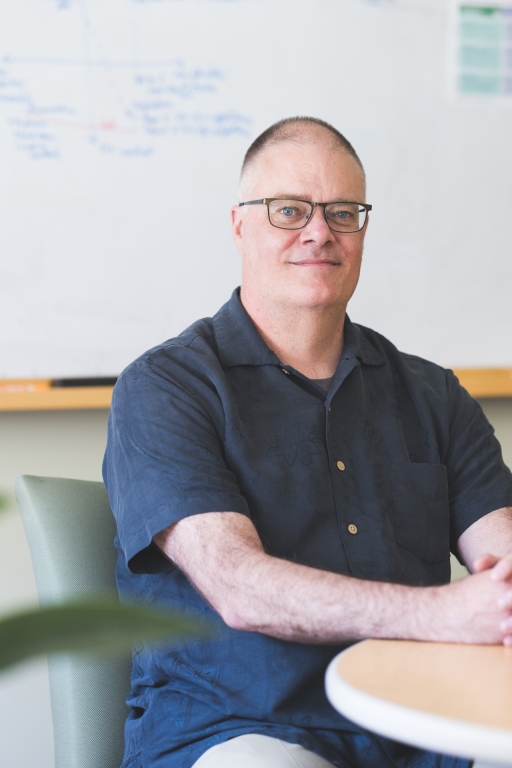
Scott D. Pauls
Professor
Appointments
Interim Dean of Undergraduate Education
Professor of Mathematics
Area of Expertise
Complex Systems,
Sub-Riemannian Geometry
Biography
Professor Pauls' research in mathematics focuses on building and analyzing network models for social, biological, and physical systems. In his theoretical work, he aims to find network theoretic signatures for outcomes of dynamical processes. Recently, he has been able to apply these techniques to systems in political science, economics, neuroscience, and environmental science.
Education
B.A. Columbia University
Ph.D. University of Pennsylvania
Publications
DeFord, D. R. and Pauls, S. D., Spectral clustering methods for multiplex networks, Physica A. 533 (2019), 121949. (https://doi.org/10.1016/j.physa.2019.121949)
Cogswell, C., Pauls, S. D., Gauthier, A., DeSilva, E., Schroer, K., Agile and Active: Sustaining Pedagogical Change in a Large-Enrollment Calculus Course, J. Effective Teaching. 2(2) (2019), 1-22.
(https://jethe.org/index.php/jethe/article/view/32)
Khoo, T., Fu, F., Pauls, S. D., Double-edged effect of spillover on cooperation in multiplex games, Scientific Reports, 8 (2018), 6922.
Leib-Lappan, R., Kumar, D., Obbard, R., and Pauls, S. D. A network model for characterizing brine channels in sea ice, The Cryosphere, (2017) (https://doiorg/10.5194/tc-2017-169)
DeFord, D. R. and Pauls, S. D., A new framework for dynamics on multiplex networks, J. Complex Networks. (2017)(https://doi.org/10.1093/comnet/cnx041)
Myung, J. and Pauls, S. D., Encoding seasonal information in a two-oscillator model of the multi-oscillator circadian clock, Eur. J. Neuroscience. (2017) (doi: 10.1111/ejn.13697)
Pauls, S. D. and Cranmer, S., Affinity Communities in United Nations Voting: Implications for Conflict, Cooperation, and Democracy, Physica A, 484 (2017), 428-439. (https://doi.org/10.1016/j.physa.2017.04.177)
Khoo, T., Fu, F., Pauls, S. D., Coevolution of Cooperation and Partner Rewiring Range in Spatial Social Networks, Nature Communications, 6 (2016), 36293. (http://www.nature.com/articles/srep36293)
Pauls, S. D., Honma, K-I., Honma, S., Silver, R., Deconstructing circadian rhythmicity with models and manipulations, Trends in Neuroscience, 49:6 (2016). 405-419. (http://dx.doi.org/10.1016/j.tins.2016.03.006)
Brocklebank, S., Pauls, S. D., Rockmore, D., and Bates, T. C., A Spectral Clustering Approach to the Structure of Personality: Contrasting the FFM and HEXACO Models," Journal of Research in Personality, 57 (2015), 100-109. (doi:10.1016/j.jrp.2015.05.003)
Pauls, S. D., Leibon, G., and Rockmore, D., The Social Identity Voting model: ideology from community structures, Research and Politics, April-June 2015, 1-11. (doi: 10.1177/2053168015570415)
Davis, M., Anthony, D., and Pauls, S. D., Seeking and receiving social support on Facebook for surgery, Social Science & Medicine, 131 (2015) 40-47. (doi:10.1016/j.socscimed.2015.02.038)
Pauls, S. D., Foley, N., LaSautier, J., Hastings, M., Maywood, E., and Silver, R., Differential contributions of intra- and inter-cellular mechanisms to spatial and temporal architecture of the suprachiasmatic nucleus circadian circuitry in wild-type, CRY- and VPAC2 –null mutant mice, Eur. J. Neuroscience. 40:3 (2014), 2528-2540. (http://onlinelibrary.wiley.com/doi/10.1111/ejn.12631/full)
Contact